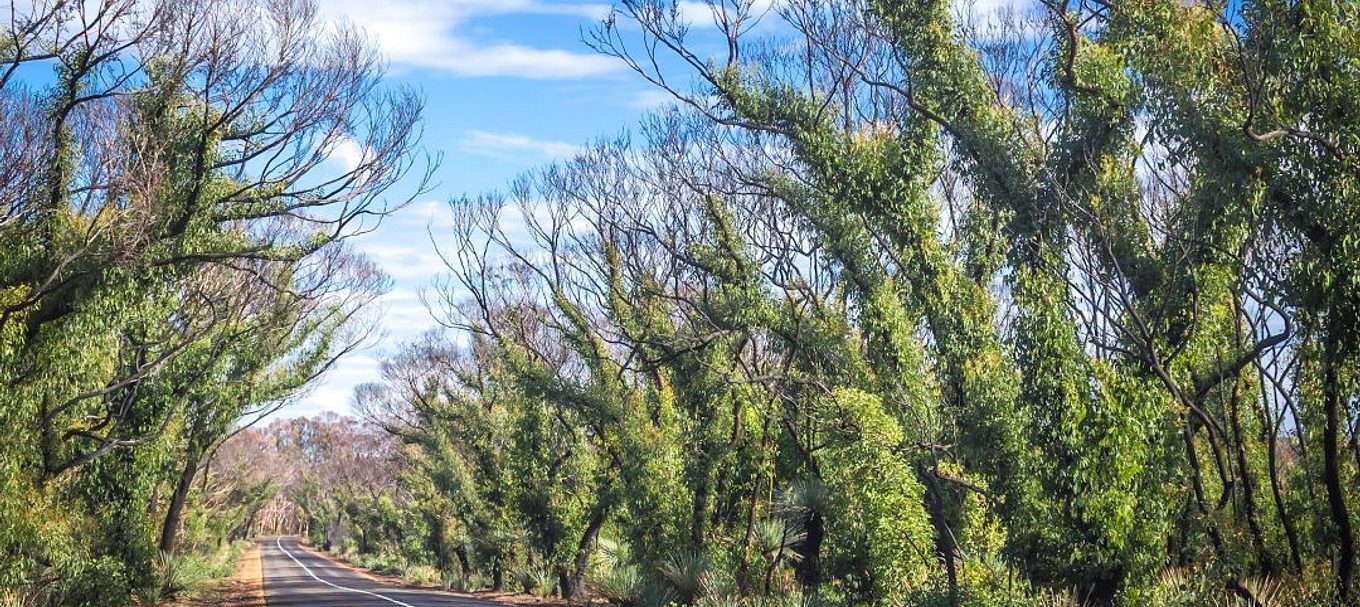
Find out how South Australia’s Flinders Chase National Park is recovering post-bushfire
The 2019-20 bushfire event on Kangaroo Island was the largest in the island’s recorded history. The bushfire burnt most of the western end of the island, including 96 per cent of Flinders Chase National Park (and the adjoining Ravine des Casoars Wilderness Protection Area).
But, it doesn’t take long for the bush to bounce back. Many native plant species are adapted to survive, regenerate and thrive after fire. Here’s how Flinders Chase is faring:
Beauty of regeneration
Epicormic growth is a term used for the splashes of greenery emerging on woody trees following bushfires.
Fire triggers dormant buds to sprout again – this is the plant’s reaction to stress. Normally these buds are supressed by hormones from active shoots higher up the plant, but because these higher up shoots have been burnt away, the hormones are not there to supress them anymore (yes, trees have hormones too).
Epicormic growth can be very fast. Following the recent rains, some plants are growing a few centimetres a day!
Post-bushfires plant life is bouncing back at Flinders Chase on Kangaroo Island
Native sedges, gahnias and other plants are also re-sprouting – some did so within only three weeks of the bushfires.
This re-growth is providing important food for species like wallabies and kangaroos, as well as lesser-known critters like insects, which are an important part of any ecosystem and food chain.
The park’s bushland of yaccas, hakeas and mallees are also turning the landscape green again.
Yacca leaves grow very quickly after fires, even when the plant is not much more than a black stump.
The yacca flower spikes that form soon after fires can grow several centimetres a day to a height of over 6 metres within three to six months. This makes them one of the earliest and most important nectar and pollen providers for creatures like lorikeets, pygmy possums and a whole host of insects.
It won’t be long until the bush is back.
Fire history of Flinders Chase
Bushfires have played an integral part in shaping the ecology of the Australian landscape for millions of years. Warm springs, hot summers, dry vegetation, strong winds and low humidity all create the ideal conditions for fire, with lightning the primary trigger.
The last major bushfire in Flinders Chase National Park was in 2007, but there were others in 1970, 1968, 1958, 1954, 1953 and 1931 (when records began).
The December 2007 bushfire burnt more than 90,000 hectares, of which 75,000 hectares was park and reserve land.
Did you know?
The iconic sites of Remarkable Rocks, Cape du Couedic Lighthouse and accommodation, Admirals Arch and Cape Borda Lightstation and heritage keeper’s cottages all survived the bushfires and many bushfire affected sites have reopened to visitors. Find out what's open now in Kangaroo Island's iconic national parks destinations.
Want to learn more about South Australia’s bushfire recovery? Find out how theglossy-black cockatoos are going on KIor how theAdelaide Hills parks are bouncing back after the bushfires.
(Main image courtesy of Quentin Chester)





